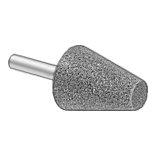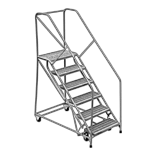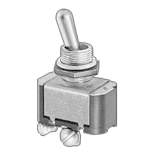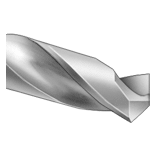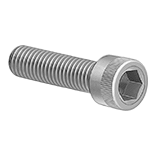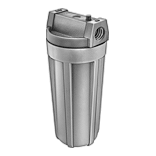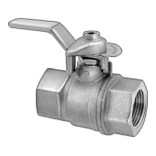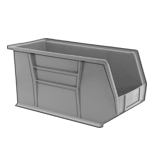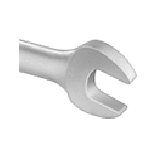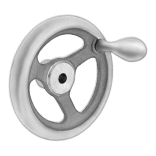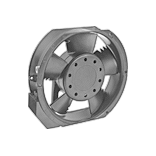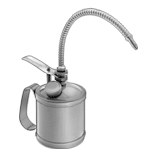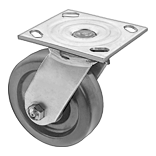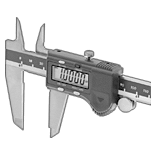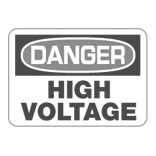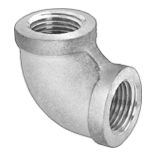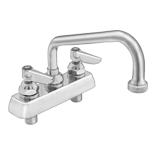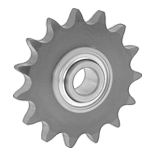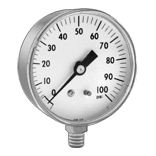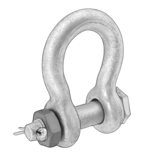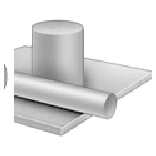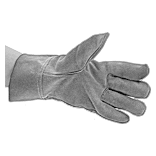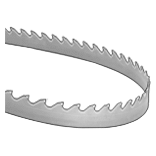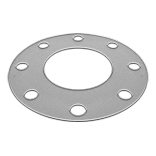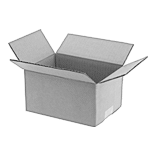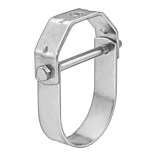About Sealant Flexibility
More
About Paint and Protective Coatings
More
Silicone Sealants

Made from silicone, these sealants are RTV (room-temperature vulcanizing). They’re non-sagging, so they won't drip from vertical and overhead surfaces.
Elongation and joint compression/expansion tolerance indicate flexibility—the higher the values are, the more joint movement sealants can sustain. Sealants that are good for joining dissimilar materials also work well in environments with wide temperature fluctuation.
Container | |||||||||||||
|---|---|---|---|---|---|---|---|---|---|---|---|---|---|
| Mfr. Model No. | Size, fl. oz. | Type | Begins to Harden | Reaches Full Strength | Elongation | Joint Compression/ Expansion Tolerance | Hardness | Temp. Range, °F | For Joining | Specifications Met | Choose a Color | Each | |
Dow Corning Silicone | |||||||||||||
| 733 | 10.1 | Cartridge | 10 min. | 24 hrs. | 500% | -25% to 25% | Soft (Durometer 25A) | -70° to 350° | Metal Metal to Plastic Metal to Glass Plastic Glass | FDA Compliant 21 CFR 177.2600, UL 94 HB | 000000 | 00000 | |
| PR-1200 Primer for Dow Corning 700, 732, 733, 736, Loctite®, 76435T21, 76435T11, and 7545A611 Sealants (10.9 fl. oz. Bottle) | 0000000 | Each | 000000 |
Low-Outgassing Silicone Sealants

Tested to meet ASTM E595, a standard used by NASA, these sealants fill joints and seams while releasing almost no volatile emissions that could damage sensitive electronics, even in a vacuum. Made of silicone, they’re RTV (room-temperature vulcanizing), so they’ll fully harden at room temperature.
Elongation indicates flexibility—the higher the value is, the more a sealant can stretch.
Container | |||||||||||||
|---|---|---|---|---|---|---|---|---|---|---|---|---|---|
| Size, fl. oz. | Type | Begins to Harden | Reaches Full Strength | Elongation | Joint Compression/ Expansion Tolerance | Tensile Strength, psi | Hardness | Temp. Range, °F | Specifications Met | For Joining | Color | Each | |
| 5.8 | Cartridge | 150 min. | 7 days | 420% | -25% to 25% | 600 | Durometer 36A (Medium Soft) | -200° to 500° | ASTM E595 | Metal Plastic Rubber Composites Glass | White | 0000000 | 0000000 |
Noncorrosive Silicone Sealants

Also known as neutral-cure sealants, these won't discolor copper, brass, and concrete. They’re non-sagging, so they won't drip from vertical and overhead surfaces. Made from silicone, sealants are RTV (room-temperature vulcanizing).
Elongation and joint compression/expansion tolerance indicate flexibility—the higher the values are, the more joint movement sealants can sustain. Sealants that are good for joining dissimilar materials also work well in environments with wide temperature fluctuation.
Sealants that cannot be sold to California exceed local regulatory limits on VOCs (volatile organic compounds).
Container | |||||||||||||
|---|---|---|---|---|---|---|---|---|---|---|---|---|---|
| Mfr. Model No. | Size, fl. oz. | Type | Begins to Harden | Reaches Full Strength | Elongation | Joint Compression/ Expansion Tolerance | Hardness | Temp. Range, °F | For Joining | Cannot Be Sold To | Color | Each | |
Permatex Silicone | |||||||||||||
| 81173 | 12.9 | Cartridge | 30 min. | 24 hrs. | 350% | Not Rated | Soft (Durometer 15A) | -75° to 450° | Metal Metal to Plastic Metal to Rubber Metal to Composites Metal to Glass Plastic Plastic to Rubber Plastic to Composites Plastic to Glass Rubber Rubber to Composites Rubber to Glass Asphalt Composites Composites to Glass Glass Masonry Wood | CA | Black | 0000000 | 000000 |
Optically Clear All-Weather Application Sealants

Clear enough to read through, this UV-resistant sealant allows optimal light transmission for use with solar cells and fiber optics. Apply it in cold temperatures, on wet surfaces, and even through running water. The sealant is non-sagging, so it won't drip from vertical and overhead surfaces. It cannot be sold to the regions listed due to local regulatory limits on VOC (volatile organic compounds).
Elongation indicates flexibility—the higher the value is, the more a sealant can stretch. This sealant is good for use between dissimilar materials and in environments with wide temperature fluctuation.
Container | ||||||||||||
|---|---|---|---|---|---|---|---|---|---|---|---|---|
| Size, fl. oz. | Type | Begins to Harden | Reaches Full Strength | Elongation | Tensile Strength, psi | Hardness | Application Temp. Range, °F | Temp. Range, °F | For Joining | Cannot Be Sold To | Each | |
Hybrid Polymer | ||||||||||||
| 10.3 | Cartridge | 45 min. | 4 days | 1,000% | 45 | Soft (Durometer 20A) | 40° to 140° | -40° to 180° | Metal Metal to Plastic Metal to Composites Metal to Glass Plastic Plastic to Composites Plastic to Glass Asphalt Composites Composites to Glass Glass Masonry Wood Wood to Glass | Los Angeles County, CA; Orange County, CA; Riverside County, CA; San Bernardino County, CA; CO; CT; DC; DE; MA; MD; ME; NJ; Northern VA; NY; PA; RI; UT; VT | 0000000 | 000000 |
Optically Clear Sealants

Clear enough to read through, these UV-resistant sealants allow optimal light transmission for use with solar cells and fiber optics. Sealants are non-sagging, so they won't drip from vertical and overhead surfaces.
Elongation and joint compression/expansion tolerance indicate flexibility—the higher the values are, the more joint movement sealants can sustain. 3M 730 UV is good for use between dissimilar materials and in environments with wide temperature fluctuation.
Container | ||||||||||||
|---|---|---|---|---|---|---|---|---|---|---|---|---|
| Mfr. Model No. | Size, fl. oz. | Type | Begins to Harden | Reaches Full Strength | Elongation | Joint Compression/ Expansion Tolerance | Tensile Strength, psi | Hardness | Temp. Range, °F | For Joining | Each | |
3M Hybrid Polymer | ||||||||||||
| 730 UV | 10.3 | Cartridge | 30 min. | 24 hrs. | 300% | Not Rated | 250 | Soft (Durometer 30A) | -40° to 190° | Metal Metal to Plastic Metal to Composites Plastic Plastic to Composites Composites Wood | 0000000 | 000000 |
Puncture-Resistant Sealants


Form seals that resist punctures, cuts, and abrasion to withstand heavy wear and tampering. These sealants are non-sagging, so they won't drip from vertical and overhead surfaces.
Elongation and joint compression/expansion tolerance indicate flexibility—the higher the values are, the more joint movement sealants can sustain. These sealants are best suited to joints between similar materials that aren't exposed to wide temperature fluctuation.
Container | ||||||||||||
|---|---|---|---|---|---|---|---|---|---|---|---|---|
| Size, fl. oz. | Type | Begins to Harden | Reaches Full Strength | Elongation | Joint Compression/ Expansion Tolerance | Tensile Strength, psi | Hardness | Temp. Range, °F | For Joining | Color | Each | |
Polyurethane | ||||||||||||
| 10.1 | Cartridge | 90 min. | 48 hrs. | 225% | -12.5% to 12.5% | 250 | Medium (Durometer 55A) | 20° to 120° | Metal, Plastic, Rubber, Asphalt, Composites, Glass, Masonry, Wood | White | 0000000 | 000000 |
| 20 | Sausage Pack | 90 min. | 48 hrs. | 225% | -12.5% to 12.5% | 250 | Medium (Durometer 55A) | 20° to 120° | Metal, Plastic, Rubber, Asphalt, Composites, Glass, Masonry, Wood | White | 0000000 | 00000 |
Structural Sealants


These structural sealants combine the mechanical strength of an adhesive with excellent sealing properties and high flexibility. They’re non-sagging, so they won't drip from vertical and overhead surfaces.
Elongation and joint compression/expansion tolerance indicate flexibility—the higher the values are, the more joint movement sealants can sustain. For joints between dissimilar materials and in environments with wide temperature fluctuation, choose a sealant with a higher elongation or joint compression/expansion tolerance. For high-wear applications, choose a harder sealant for the most abrasion resistance.
Container | ||||||||||||
|---|---|---|---|---|---|---|---|---|---|---|---|---|
| Mfr. Model No. | Size, fl. oz. | Type | Begins to Harden | Reaches Full Strength | Elongation | Joint Compression/ Expansion Tolerance | Hardness | Temp. Range, °F | For Joining | Choose a Color | Each | |
3M Hybrid Polymer | ||||||||||||
| 760 UV | 9.8 | Cartridge | 30 min. | 24 hrs. | 100% | Not Rated | Medium Hard (Durometer 55A) | -40° to 212° | Metal Metal to Plastic Metal to Rubber Metal to Composites Plastic Plastic to Rubber Plastic to Composites Rubber Rubber to Composites Composites Wood | 00000000 | 000000 | |
| 760 UV | 20.3 | Sausage Pack | 30 min. | 24 hrs. | 100% | Not Rated | Medium Hard (Durometer 55A) | -40° to 212° | Metal Metal to Plastic Metal to Rubber Metal to Composites Plastic Plastic to Rubber Plastic to Composites Rubber Rubber to Composites Composites Wood | 00000000 | 00000 | |
3M Polyurethane | ||||||||||||
| 540 | 20.3 | Sausage Pack | 90 min. | 24 hrs. | 600% | -25% to 25% | Medium Soft (Durometer 40A) | -40° to 190° | Metal Plastic Rubber Composites Wood | 00000000 | 00000 | |
| 551 | 20.3 | Sausage Pack | 180 min. | 24 hrs. | 600% | Not Rated | Medium (Durometer 45A) | -40° to 190° | Metal Metal to Plastic Metal to Rubber Metal to Composites Plastic Plastic to Rubber Plastic to Composites Rubber Rubber to Composites Composites Wood | White | 00000000 | 00000 |
Submersible Sealants

These non-sagging sealants will not drip while hardening on vertical and overhead surfaces. They’re marine grade, so they stand up to water, corrosion from salt spray, mildew, and UV light.
Elongation and joint compression/expansion tolerance indicate flexibility—the higher the values are, the more joint movement sealants can sustain. Sealants that are good for joining dissimilar materials also work well in environments with wide temperature fluctuation.
Container | ||||||||||||
|---|---|---|---|---|---|---|---|---|---|---|---|---|
| Mfr. Model No. | Size, fl. oz. | Type | Begins to Harden | Reaches Full Strength | Elongation | Joint Compression/ Expansion Tolerance | Hardness | Temp. Range, °F | For Joining | Choose a Color | Each | |
3M Polyurethane | ||||||||||||
| 4200 FC | 3 | Tube | 2 hrs. | 24 hrs. | 400% | Not Rated | Medium Soft (Durometer 40A) | -40° to 190° | Metal Metal to Plastic Metal to Composites Metal to Glass Plastic Plastic to Composites Plastic to Glass Composites Glass Wood Wood to Glass | White | 00000000 | 000000 |
| 4200 FC | 10 | Cartridge | 2 hrs. | 24 hrs. | 400% | Not Rated | Medium Soft (Durometer 40A) | -40° to 190° | Metal Metal to Plastic Metal to Composites Metal to Glass Plastic Plastic to Composites Plastic to Glass Composites Glass Wood Wood to Glass | 00000000 | 00000 | |
High-Strength Self-Leveling Concrete Joint Sealants

Seal concrete joints in high-traffic locations—these sealants stand up to heavy wear and tear, such as steel wheel traffic. Thinner than non-sagging sealants, these flow easily into cracks and have a smooth finish.
Silicone sealant is RTV (room-temperature vulcanizing).
Elongation and joint compression/expansion tolerance indicate flexibility—the higher the values are, the more joint movement sealants can sustain. These sealants are best suited to joints between similar materials that aren't exposed to wide temperature fluctuation. For high-wear applications, choose a harder sealant for the most abrasion resistance.
Container | For Max. Crack | ||||||||||||
|---|---|---|---|---|---|---|---|---|---|---|---|---|---|
| Size, fl. oz. | Type | Begins to Harden | Reaches Full Strength | Elongation | Joint Compression/ Expansion Tolerance | Hardness | Wd. | Dp. | Temp. Range, °F | For Joining | Color | Each | |
Silicone | |||||||||||||
| 29 | Cartridge | 60 min. | 7 days | 1,000% | -50% to 100% | Soft (Durometer 20A) | 1" | 1/2" | -60° to 300° | Metal, Plastic, Rubber, Composites, Glass, Masonry, Wood | Limestone | 0000000 | 000000 |
High-Strength Concrete Joint Sealants


Seal concrete joints in high-traffic areas—these sealants stand up to heavy wear and tear, such as steel wheel traffic. They're non-sagging, so they won't drip from vertical and overhead surfaces. Made from silicone, sealants are RTV (room-temperature vulcanizing).
Elongation and joint compression/expansion tolerance indicate flexibility—the higher the values are, the more joint movement sealants can sustain. These sealants are best suited to joints between similar materials that aren't exposed to wide temperature fluctuation. For high-wear applications, choose a harder sealant for the most abrasion resistance.
Container | For Max. Crack | ||||||||||||
|---|---|---|---|---|---|---|---|---|---|---|---|---|---|
| Size, fl. oz. | Type | Begins to Harden | Reaches Full Strength | Elongation | Joint Compression/ Expansion Tolerance | Hardness | Wd. | Dp. | Temp. Range, °F | For Joining | Color | Each | |
Silicone | |||||||||||||
| 20 | Sausage Pack | 60 min. | 7 days | 1,000% | -50% to 100% | Medium Hard (Durometer 55A) | 1" | 1/2" | -20° to 300° | Metal, Plastic, Rubber, Composites, Glass, Masonry, Wood | Gray | 000000 | 000000 |
| 29 | Cartridge | 60 min. | 7 days | 1,000% | -50% to 100% | Medium Hard (Durometer 55A) | 1" | 1/2" | -20° to 300° | Metal, Plastic, Rubber, Composites, Glass, Masonry, Wood | Gray | 000000 | 00000 |
UV-Resistant Glass Sealants

These sealants don't degrade in sunlight. Also known as glazing compounds, use these sealants to install glass in framing. They’re non-sagging, so they won't drip from vertical and overhead surfaces. Made from silicone, these sealants are RTV (room-temperature vulcanizing).
Elongation and joint compression/expansion tolerance indicate flexibility. For joints between dissimilar materials and in environments with wide temperature fluctuation, choose a sealant with a higher elongation or joint compression/expansion tolerance.
Container | ||||||||||||
|---|---|---|---|---|---|---|---|---|---|---|---|---|
| Size, fl. oz. | Type | Begins to Harden | Reaches Full Strength | Elongation | Joint Compression/ Expansion Tolerance | Hardness | Temp. Range, °F | Specifications Met | For Joining | Choose a Color | Each | |
Silicone | ||||||||||||
| 10.1 | Cartridge | 30 min. | 24 hrs. | 475% | -25% to 25% | Soft (Durometer 20A) | -75° to 400° | FDA Compliant 21 CFR 175.105, FDA Compliant 21 CFR 177.2600, Fed. Spec. TT-S-001543A Class A, Fed. Spec. TT-S-00230C Type II Class A, NSF/ANSI 51 | Metal Metal to Glass Plastic Plastic to Glass Rubber Rubber to Glass Composites Composites to Glass Glass Wood Wood to Glass | 0000000 | 00000 | |
Compression Seal Tape

Wrap this tape tightly around pipe and other surfaces to seal cracks and joints without having to shut down your system.
Epoxy Potting Compounds for Harsh Environments
Tough enough to be permanently submersed in seawater, these compounds protect sensitive electronics, such as circuit boards, semiconductors, and sensors in harsh environments. They resist moisture, salt, and chemicals, so you can use them in corrosive oil, marine, and mining applications. These compounds can also be used within autoclaves. Because they are epoxies, they are rigid, resist wear, and create excellent electrical insulation. They withstand a wide range of temperatures, and this formulation won’t crack or split as components heat up and cool down.
They come in a cartridge, so you can apply them precisely. To dispense, they require a mixer nozzle and gun (both sold separately).

Dry Time | |||||||||||
|---|---|---|---|---|---|---|---|---|---|---|---|
| Container Size, fl. oz. | Consistency | Touch, hrs. | Overall, hrs. | Hardness Rating | Dielectric Strength, V/mil | Temp. Range, °F | Environment | For Use On | Autoclavable | Each | |
| 1.69 | Thick Liquid | 12 | 24 | Extra Hard | 500 | -50° to 350° | Corrosive, Salt Spray, Submersible | Brass, Bronze, Copper, Steel, Stainless Steel, Cast Iron, Titanium, Polystyrene Plastic, Polycarbonate Plastic, Polyurethane Rubber, ABS Plastic, PVC Plastic, CPVC Plastic, PVDF Plastic, Polyimide Plastic, HDPE Plastic, Nylon Plastic, PEEK Plastic, Polyethylene Plastic, UHMW Plastic, Polypropylene Plastic, Glass | Yes | 0000000 | 000000 |
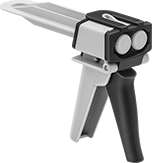
| For Cartridge Size | Each | |
| 1.69 fl. oz. | 00000000 | 000000 |
| For Cartridge Size | Each | |
| 1.69 fl. oz. | 00000000 | 00000 |
